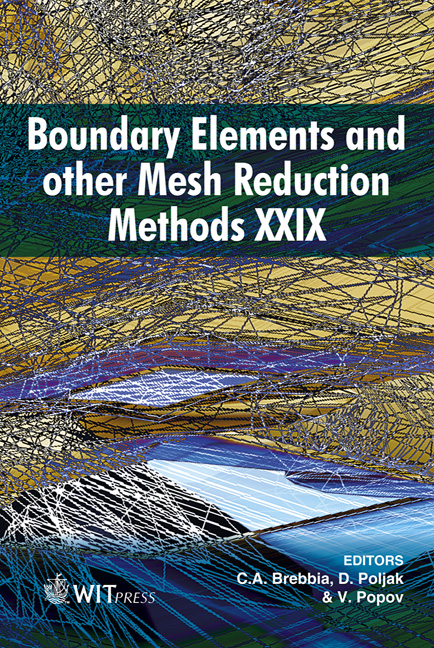Meshless Analysis Of Flow And Concentration In A Water Reservoir
Price
Free (open access)
Transaction
Volume
44
Pages
10
Published
2007
Size
481 kb
Paper DOI
10.2495/BE070171
Copyright
WIT Press
Author(s)
M. Kanoh, N. Nakamura, K. Kai, T. Kuroki & K. Sakamoto
Abstract
In an earlier study, a boundary element methodology was developed to obtain numerically stable and convergent results for the concentration distribution and flow of a water reservoir. In the process to apply the boundary element method to the flow analysis around a machine that supplies dissolved oxygen (DO), we realised that the divergence and accuracy of the very delicate flow were sensitive to the mesh (domain) and boundary discretisation. In other words, it seemed difficult to determine the appropriate lengths of the mesh (domain) and boundary discretisation for obtaining stability and convergence in the computational analysis. In this paper, a new meshless method is presented, which overcomes the difficulties of the boundary element method described above. The method is based on the idea of mesh-free radial basis functions (RBFs), which is a collocation method. Referring to the velocity vectors of the water flow calculated by the weighted finite difference method (WFDM) and the finite element method (FEM) and observed in the model simulation of a water reservoir constructed in the sanitary and environmental engineering laboratory of Kyushu Sangyo University, the effect and accuracy of the alternative meshless method were estimated. Keywords: flow and concentration in water reservoirs, meshless method, weighted finite difference method, finite element method, observed velocity in model simulation of water reservoir. 1 Introduction The poor-oxygen layer, which is short of or lacking in dissolved oxygen (DO), sometimes results in pollution of the water in a reservoir. An attempt was made
Keywords
flow and concentration in water reservoirs, meshless method, weighted finite difference method, finite element method, observed velocity in model simulation of water reservoir.





